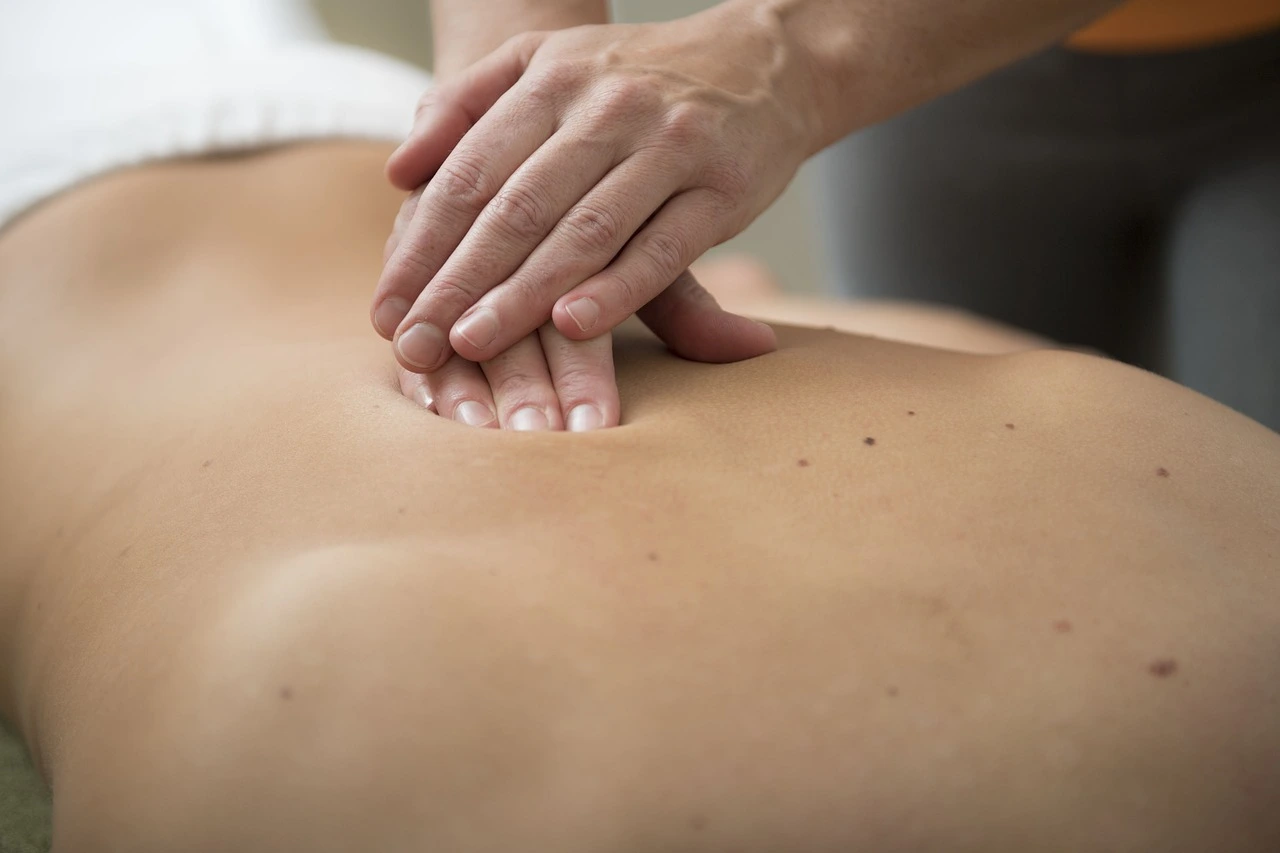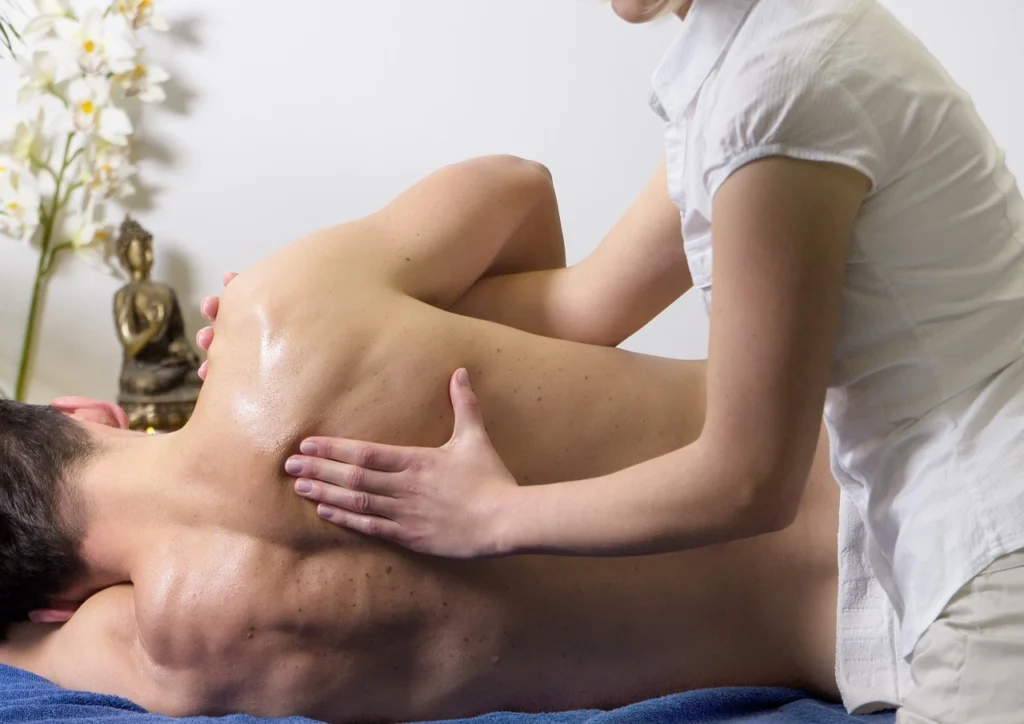Thai massage is a unique form of bodywork that blends elements of yoga, acupressure, and Ayurveda. Originating from Thailand, this practice has been used for centuries to promote relaxation, improve circulation, and increase flexibility. Unlike traditional Western massages, Thai massage is performed on a floor mat, and the client remains fully clothed throughout the session. Therapists use their hands, elbows, knees, and even feet to apply pressure and stretch the body into various yoga-like positions.
As a holistic treatment, it focuses on the body’s energy lines to enhance both physical and emotional well-being. Whether you’re seeking relief from muscle tension or simply looking to relax, Thai massage offers a balanced approach to healing. In this blog, we will explore everything you need to know about Thai massage, from its origins to its benefits and potential risks, so you can decide if it’s the right therapy.
What is Thai Massage Therapy?
Thai massage therapy is an ancient healing practice that combines acupressure, assisted yoga postures, and energy line work. Unlike typical massages, it involves rhythmic pressing, stretching, and pulling techniques rather than muscle kneading. Performed on a floor mat, clients remain fully clothed while the therapist uses their hands, thumbs, elbows, and sometimes even feet to manipulate the body.
This type of massage is rooted in Thai medicine, which views the body as a network of energy lines. By applying pressure along these lines, practitioners aim to clear blockages and restore balance to the body’s energy flow. As a result, Thai massage is not only focused on relaxing the muscles but also on improving overall well-being. The therapist helps the client move into various yoga-like positions during the session, which can improve flexibility and joint mobility. It is an active process, making it a unique experience compared to traditional, passive massage therapies.
A Brief History of Thai Massage
Thai massage has deep roots in ancient healing traditions that go back over 2,500 years. It is believed to have been developed by Jivaka Kumar Bhaccha, a physician from northern India and a contemporary of the Buddha. He is often referred to as the “Father of Medicine” in Thailand. Jivaka is said to have brought the practice of healing massage, along with Ayurvedic and yogic principles, to Thailand, where it evolved.
Throughout the centuries, Thai massage has been influenced by a mix of traditional Chinese medicine, Indian Ayurvedic practices, and Southeast Asian culture. It became an integral part of Thai medicine, blending physical healing with spiritual and energy-focused practices. Initially passed down through generations by Buddhist monks in Thailand’s temples, it was practiced as a form of holistic care.
Today, Thai massage continues to thrive, maintaining its spiritual and healing elements, while also adapting to modern therapeutic needs. It has become a popular treatment worldwide, valued for its unique combination of physical manipulation and energy balance.

What are The Benefits of Thai Massage?
Thai massage offers numerous benefits for both the body and mind. One of the primary advantages is its ability to improve flexibility and range of motion. By using gentle stretching techniques, Thai massage helps loosen tight muscles and joints, making it ideal for people who want to enhance their physical mobility. It also promotes better circulation, which can aid in delivering oxygen and nutrients to tissues and muscles, speeding up recovery and reducing fatigue.
Another significant benefit is stress relief. The rhythmic, slow movements and deep pressure help release tension stored in the body, promoting relaxation and reducing anxiety. Thai massage also helps in improving posture by aligning the body and correcting muscle imbalances. It can reduce muscle stiffness, relieve headaches, and even aid in managing chronic pain. Additionally, this type of massage is believed to balance the body’s energy, fostering a sense of well-being and mental clarity. For many, Thai massage provides both physical healing and emotional calm.
Types of Thai Massage Therapy
There are two main types of Thai massage therapy: Traditional Thai massage and Thai foot massage.
Traditional Thai massage, also known as Nuad Bo-Rarn, focuses on the entire body. It combines acupressure, deep muscle massage, and yoga-like stretching. During this therapy, the therapist uses various parts of the body—such as elbows, knees, and feet—to apply pressure along energy lines. The goal is to improve flexibility, reduce tension, and enhance energy flow, making it one of the best Thai massage options for overall body relief.
Thai foot massage, or reflexology, focuses on the feet and lower legs. This method is based on the belief that specific points on the feet correspond to different organs and systems within the body. By massaging and applying pressure to these points, Thai foot massage aims to promote overall health and well-being. It is a relaxing treatment that can help alleviate foot pain, improve circulation, and boost energy levels.
Both forms of Thai massage are rooted in traditional healing methods, offering unique benefits based on the individual’s needs and preferences.

How Does Thai Massage Work?
Thai massage therapy works by applying rhythmic pressure, stretching, and movement to the body, focusing on the body’s energy lines, or “Sen” lines. According to Thai medicine, the body contains 72,000 energy pathways, and blockages in these lines can cause discomfort, pain, or illness. Thai massage aims to clear these blockages and restore the free flow of energy, enhancing both physical and mental well-being.
During a session, the therapist uses their hands, thumbs, elbows, knees, and even feet to apply deep, steady pressure along the Sen lines. This pressure stimulates the energy points, promoting healing and relaxation. Simultaneously, the therapist assists the client in performing yoga-like stretches, which help improve flexibility, loosen stiff joints, and relieve muscle tension.
Unlike other forms of massage, Thai massage is interactive, meaning the client plays an active role by being moved and stretched into different positions. This combination of dynamic movements, pressure points, and stretching helps improve circulation, increase energy flow, and support overall bodily balance. By integrating both physical and energetic elements, Thai massage provides a holistic approach to health and healing.
Techniques of Thai Massage
Thai massage is centered around the belief that the body contains 10 key energy lines, known as sen lines. These lines are thought to carry and distribute energy throughout the body. When the flow of energy is obstructed, it can lead to discomfort, dysfunction, or pain.
The goal of Thai massage is to unblock and release energy along these lines using three primary techniques:
- Deep pressure massage
- Manipulation of energy lines through specific body movements
- Stretching of muscles and joints
What to Expect from a Thai Yoga Massage
When you attend a Thai yoga massage session, expect a treatment that’s quite different from conventional massages. Instead of lying on a massage table, you’ll typically lie on a floor mat, fully clothed in loose, comfortable attire. The session usually begins with the therapist asking about your health, any injuries, or areas of discomfort to tailor the treatment to your needs.
Thai yoga massage combines rhythmic pressing, stretching, and assisted yoga poses. The therapist will guide your body into various positions, such as stretches that resemble yoga postures while applying pressure along your energy lines. The movements are slow and deliberate, allowing your muscles and joints to loosen and relax. Unlike Western massages, which focus on rubbing or kneading muscles, Thai yoga massage emphasizes energy flow and flexibility.
A typical session lasts between 60 to 90 minutes, depending on your preference. Afterward, many clients report feeling a combination of relaxation and rejuvenation, along with improved mobility and reduced muscle tension. You may also experience a sense of mental clarity and emotional balance, as the massage stimulates both body and mind.
Frequently Asked Questions
- Is Thai massage painful?
Thai massage can involve deep pressure and stretching, which might be uncomfortable for some, especially those not used to such techniques. However, it shouldn’t be painful. If you experience pain, let your therapist know so they can adjust the pressure and intensity. - What should I wear during a Thai massage?
Thai massage is performed fully clothed. It’s best to wear loose, comfortable clothing that allows for easy movement, as the therapist will guide you through various stretches and positions. - How long does a typical Thai massage session last?
A session usually lasts between 60 to 90 minutes, but some treatments can extend up to 2 hours, depending on the client’s needs and preferences. - Can Thai massage help with chronic pain?
Yes, Thai massage is known for its ability to relieve muscle tension and improve flexibility, which can be beneficial for those dealing with chronic pain. However, individuals with certain conditions should consult a doctor before undergoing treatment. - How often should I get a Thai massage?
This depends on your personal health goals and lifestyle. For general relaxation and well-being, once or twice a month is common. More frequent sessions may be helpful if you’re seeking relief from pain or tension. - Is Thai massage safe for everyone?
Thai massage is generally safe for most people, but informing the therapist about any health conditions or injuries is important. People with certain conditions, like osteoporosis or joint issues, may need to avoid or modify their sessions. - How does Thai massage differ from other types of massage?
Thai massage focuses on stretching, yoga-like postures, and applying pressure along energy lines. It’s more dynamic and interactive compared to traditional Western massages, which mainly involve muscle kneading and rubbing.

